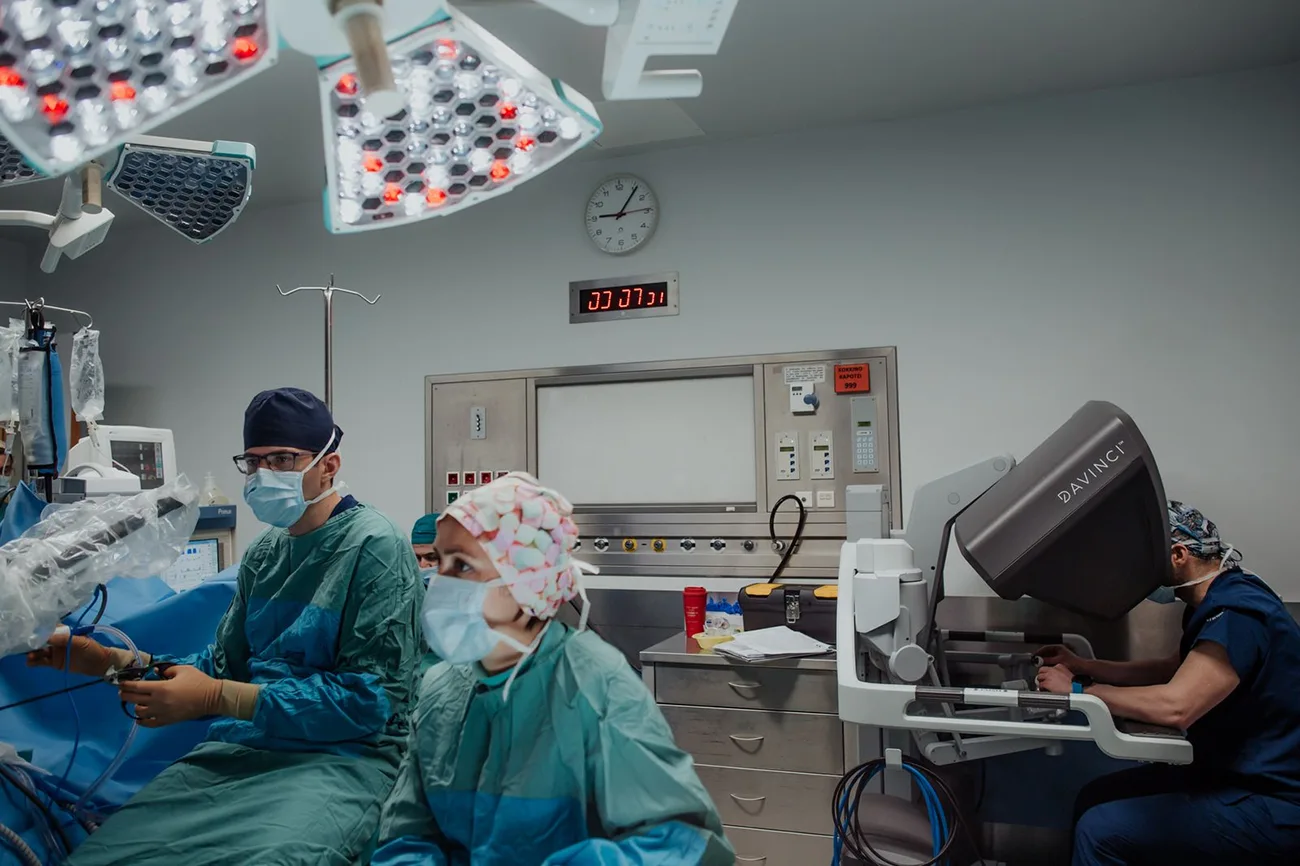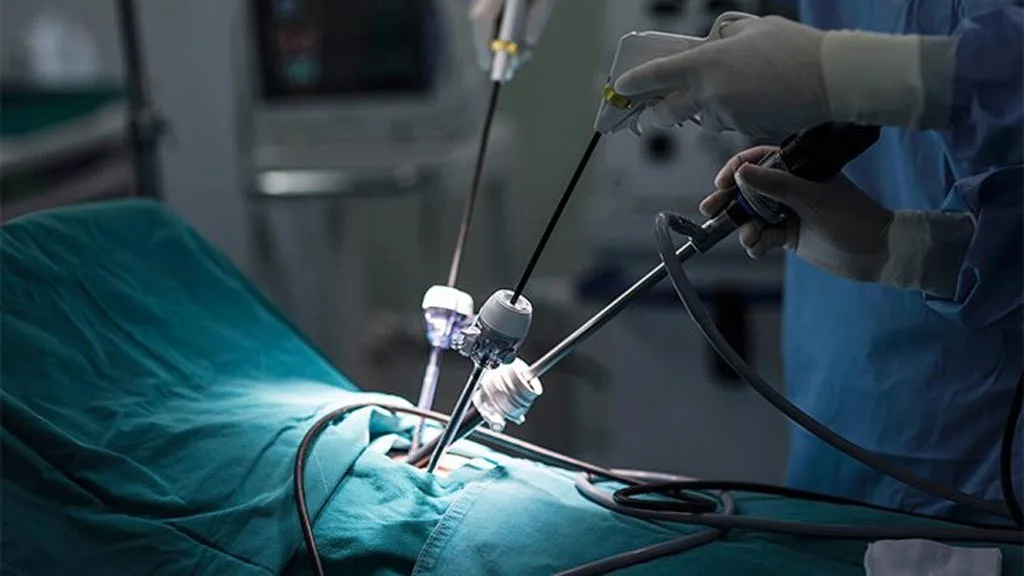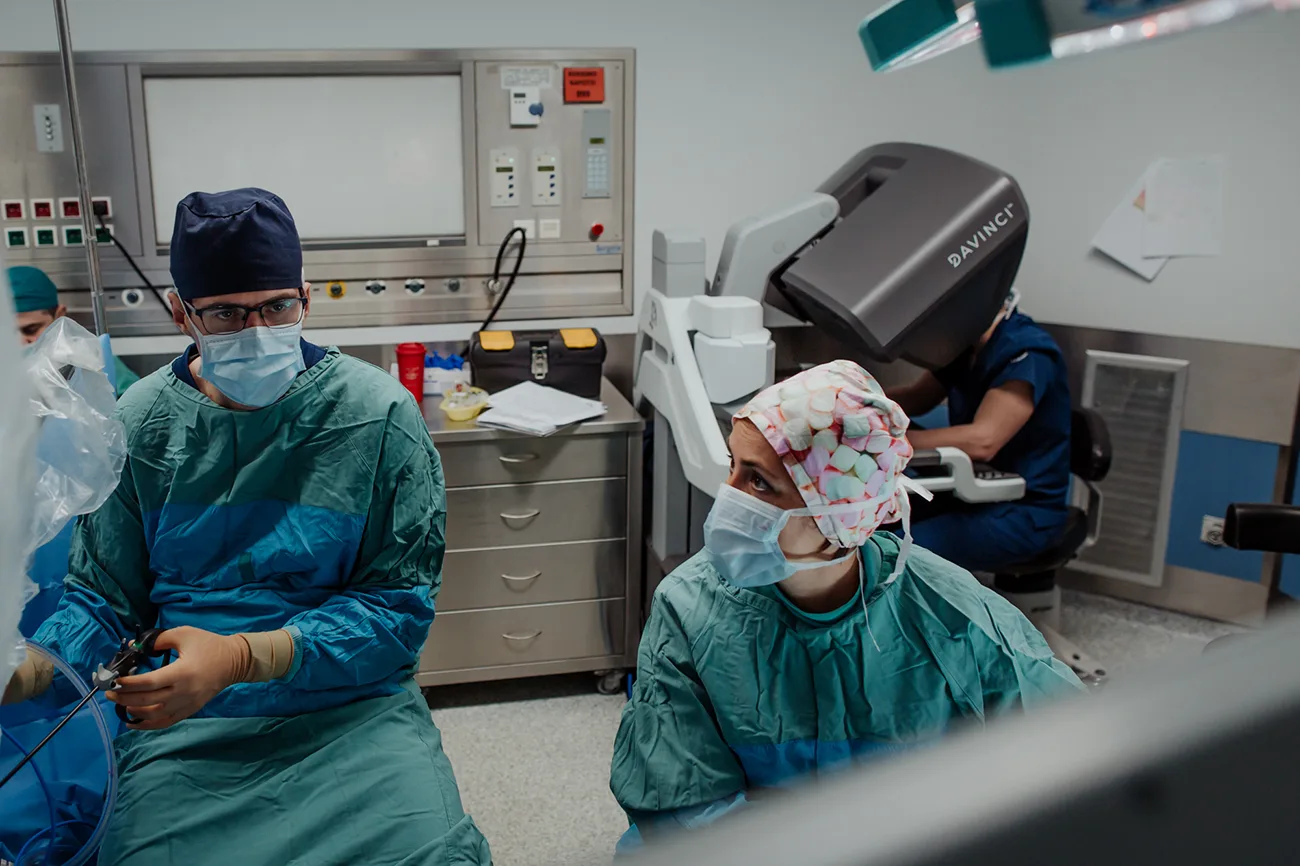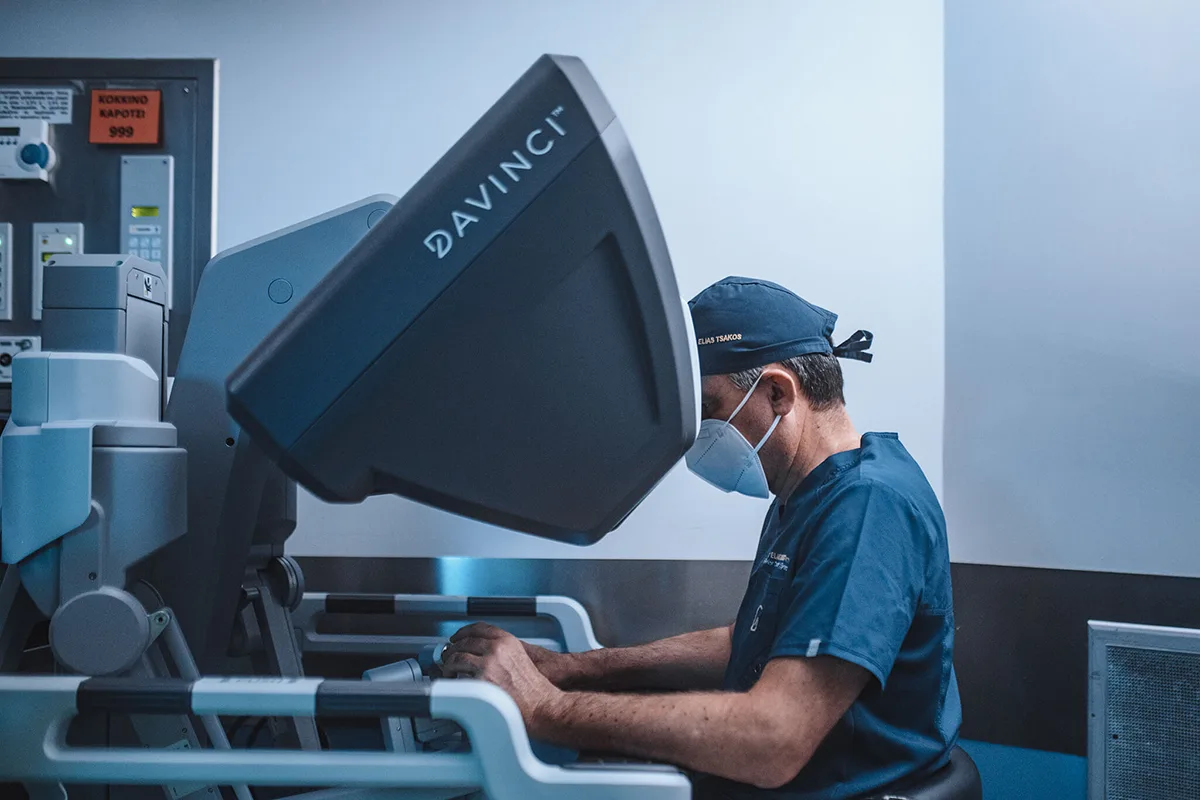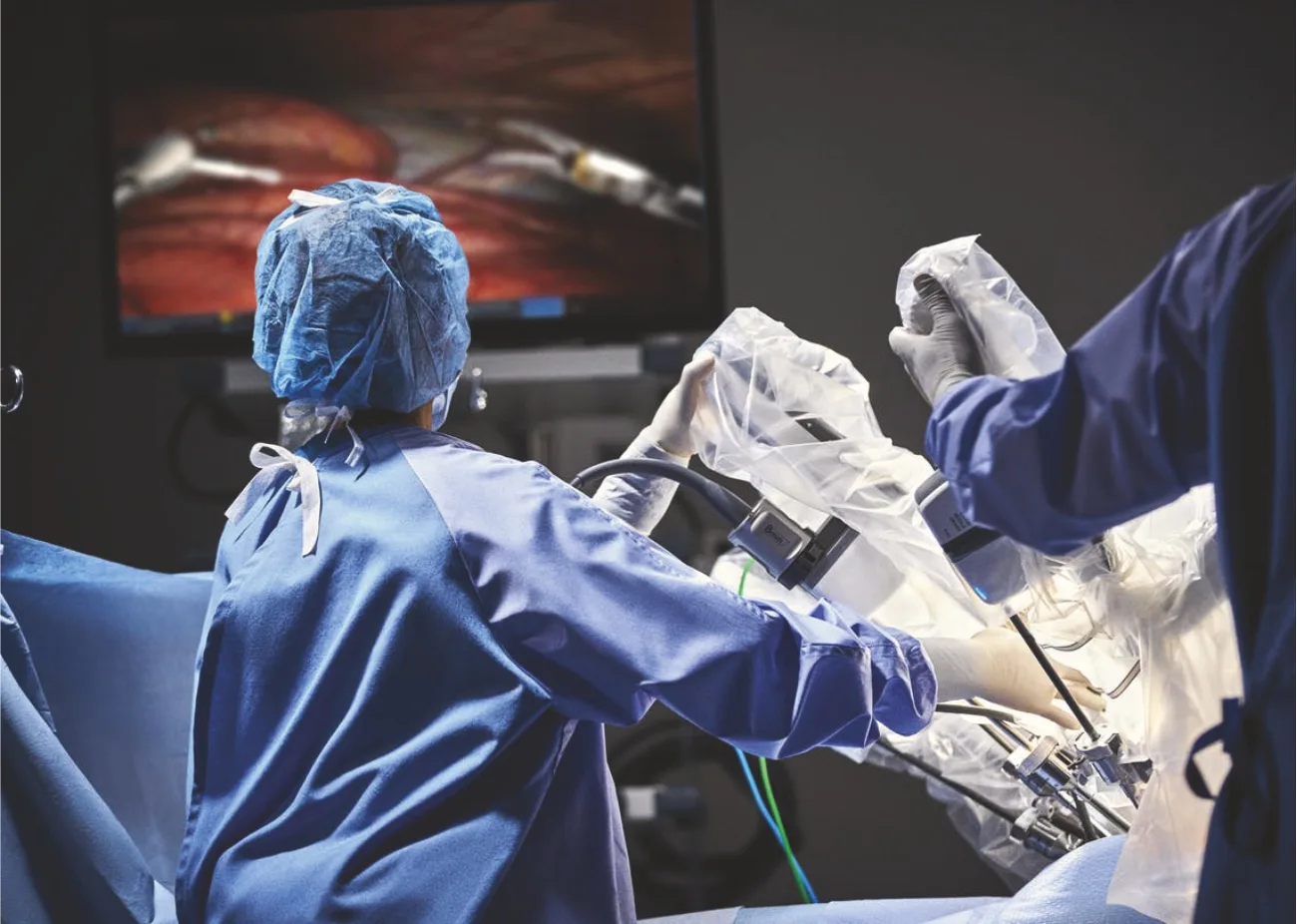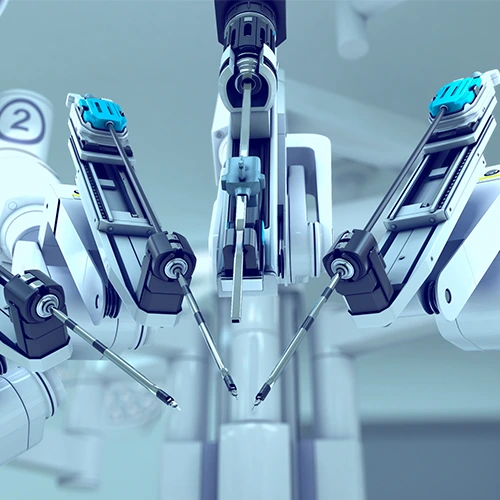
Da Vinci Robotic System
- Surgeon stays with a patient in the operating room, seated at the da Vinci system console. The console gives surgeon control of the instruments he uses to perform a surgery. Surgical procedures involve a full team of highly-trained experts, including lead surgeons, assisting surgeons, nurses, anesthesiologists, and more.
- The da Vinci vision system delivers 3D high-definition views, giving your surgeon a crystal-clear view of the surgical area that is magnified 10 times to what the human eye sees.
- Surgeon uses tiny instruments that move like a human hand but with a far greater range of motion. The system’s built-in tremor-filtration technology helps your surgeon move each instrument with smooth precision.
What are the advantages of the da Vinci surgical system?
- It ensures that surgeries are more precise by providing better visualization, improved dexterity and greater accuracy
- It enables surgeons to conduct complex surgical procedures using tiny incisions
- It replicates the surgeon’s technique and movements in real-time, with the surgeon seated just a feet away from the patient viewing an actual image of the operating field while performing the procedure in real-time by manipulating a miniaturized instrument and using tiny incisions
- It transmits force feedback sensations from the operating field to the surgeon, which are then used as a substitute for tactile sensations and are augmented by the superior vision offered by the high-resolution 3D view to deliver better visualization, accuracy and precision.
What Are the Benefits of Robotic Surgery for patients?
As robotic surgery is less invasive than traditional “open” surgery, many patients experience:
- Faster recovery
- Less postoperative pain
- Lower complication rates
- Improved outcomes
- Reduced blood loss
- Less scarring
- Shorter length of hospital stays.
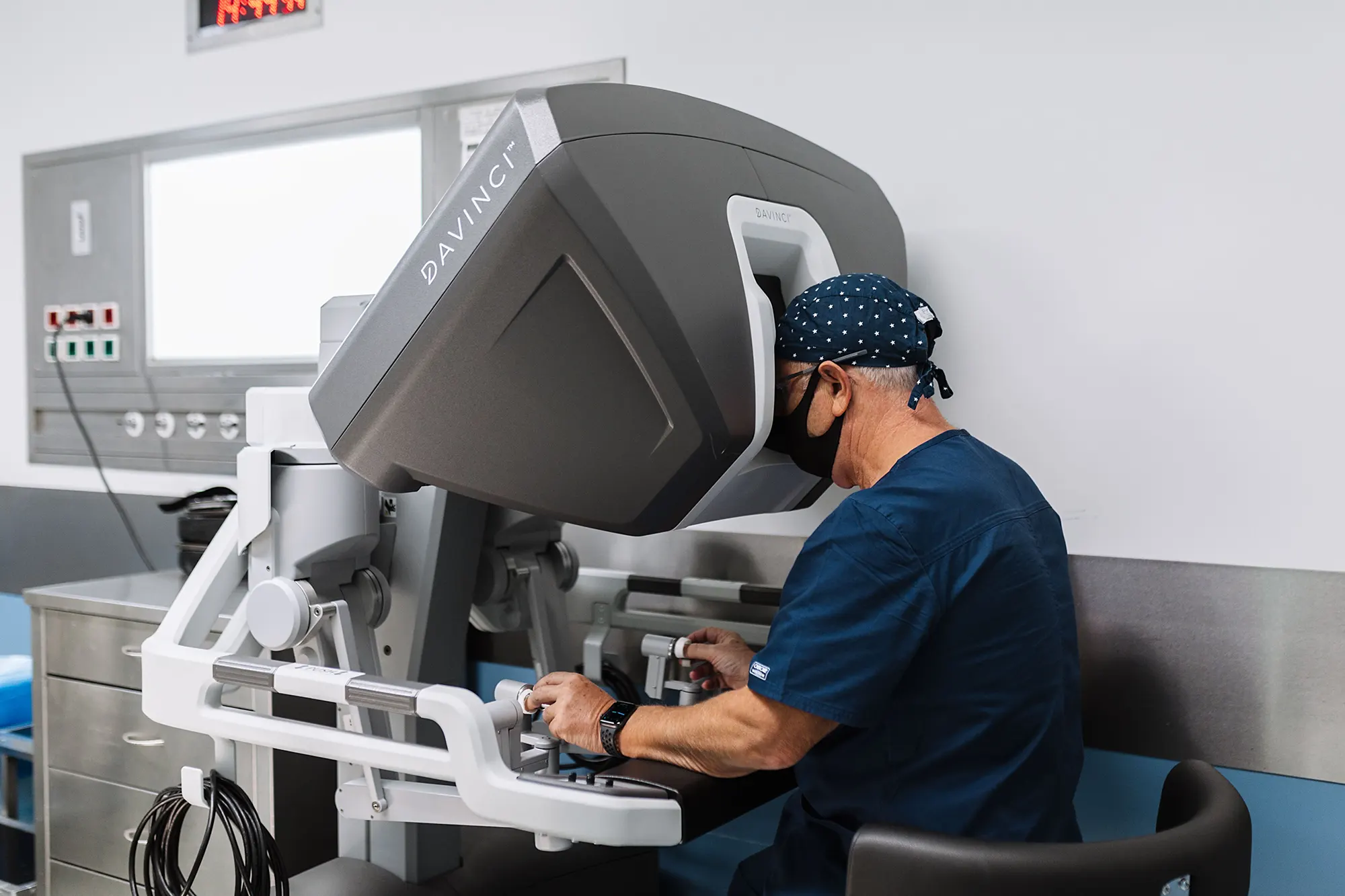
At St Luke’s hospital in Greece, we have incorporated the da Vinci surgical system into our practice. Over the years, we have been able to use the increased range of motion, improved visualization, enhanced dexterity, and greater surgical precision offered by the robotic system to deliver improved treatment outcomes to our patients.
Da Vinci procedures are performed for a wide range of conditions in specialties including cardiac, urologic, gynecologic, pediatric and general surgery.
What surgeries does the Da Vinci robot do?
The da Vinci Surgical System is a tool that helps surgeons perform a variety of surgeries including gynecological surgeries, urological, head and neck, thoracic, colorectal, cardiac and general surgeries.
Urological surgeries
The most common urological procedure currently performed using the daVinci Surgical System is radical prostatectomy (radical removal of the prostate gland for localized prostate carcinoma, especially protecting the potency nerve bundles and the urethral sphincter).
Other conditions for which robot-assisted surgery is indicated:
- Pyeloplasty
- Adrenalectomy (removal of the adrenal gland or adrenal tumor)
- Tumor nephrectomy or partial kidney resection
- Radical cystectomy
- Some types of treatment for urinary incontinence (sacrocolpopexy)
- Radical prostatectomy for prostate carcinoma
- Partial nephrectomy for renal cell carcinoma
- Radical bladder removal
- Retroperitoneal lymph nodes dissection for testicular carcinoma
- Kidney removal and ureter removal
- Renal pyeloplasty for stenosis
- Prostatectomy benign prostate enlargement and large prostate
- Uterosacropexy
- Sacrocolpopexy with Burch colposuspension for prolapse and urinary incontinence in women
- Unilateral / bilateral adnexectomy
- Enucleation of fibroids
- Anastomosis
- Partial resection of ureteral endometriosis
- Extirpation of ovarian endometriosis
- Colposacropexy
- Fistula surgery
- Lymphadenectomy.
Thoracic surgery
The robotic surgical complex is successfully used in operations to remove the entire lung (pneumonectomy), one lobe (lobectomy) or one segment (segmentectomy). In addition, the robot can be successfully used in operations on the esophagus, operations to remove cysts and masses lying in the area between the lungs, called the mediastinum.
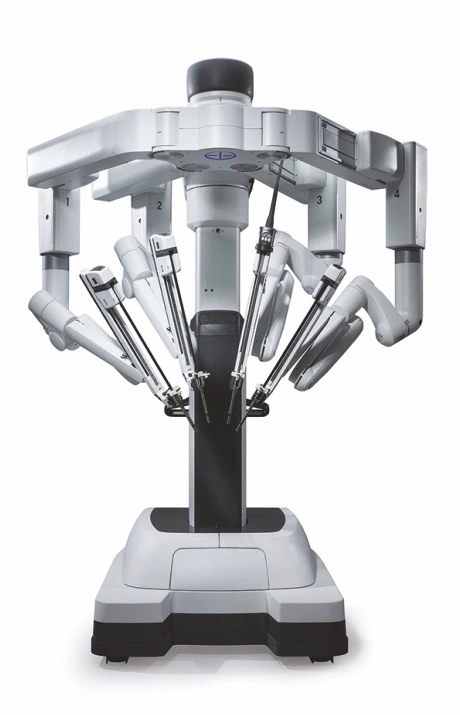
Cardiac surgery
Robotic surgery is used in mitral valve replacement and repair, tricuspid valve replacement and repair, ASD (Atrial Septal Defect), VSD (Ventricular Septal Defect), PDA (Patent Ductus Arteriosus) closure, and cardiac tumor removal.
Gynecology
- Abdominal Pain and Pelvic Pain
- Cervical Cancer
- Endometrial Cancer
- Endometriosis
- Gynecologic Cancer
- Hysterectomy
- Minimally Invasive Surgery
- Myomectomy
- Obstetrics/Gynecology
- Ovarian Cancer
- Painful Periods and Heavy Bleeding
- Pelvic Organ Prolapse
- Uterine Fibroids
General surgery
In general surgery, the robotic system is widely used in bariatric surgeries, but to a greater extent it is used to treat diseases of the stomach and gastrointestinal tract.
- Stomach cancer
- Benign gastric tumors
- Hiatal hernia, reflux surgery
- Heller Myotomy for Achalasia
- Gastrointestinal cancer
- Esophagectomy
- Transthoracic esophagectomy
- Benign tumors of the digestive system.
Types of cancer diseases for which robotic surgery is used:
- Thyroid cancer
- Cancer of the digestive system
- Stomach cancer
- Large intestine cancer
- Rectal cancer
- Liver cancer
- Pancreatic cancer
- Adrenal cancer.
